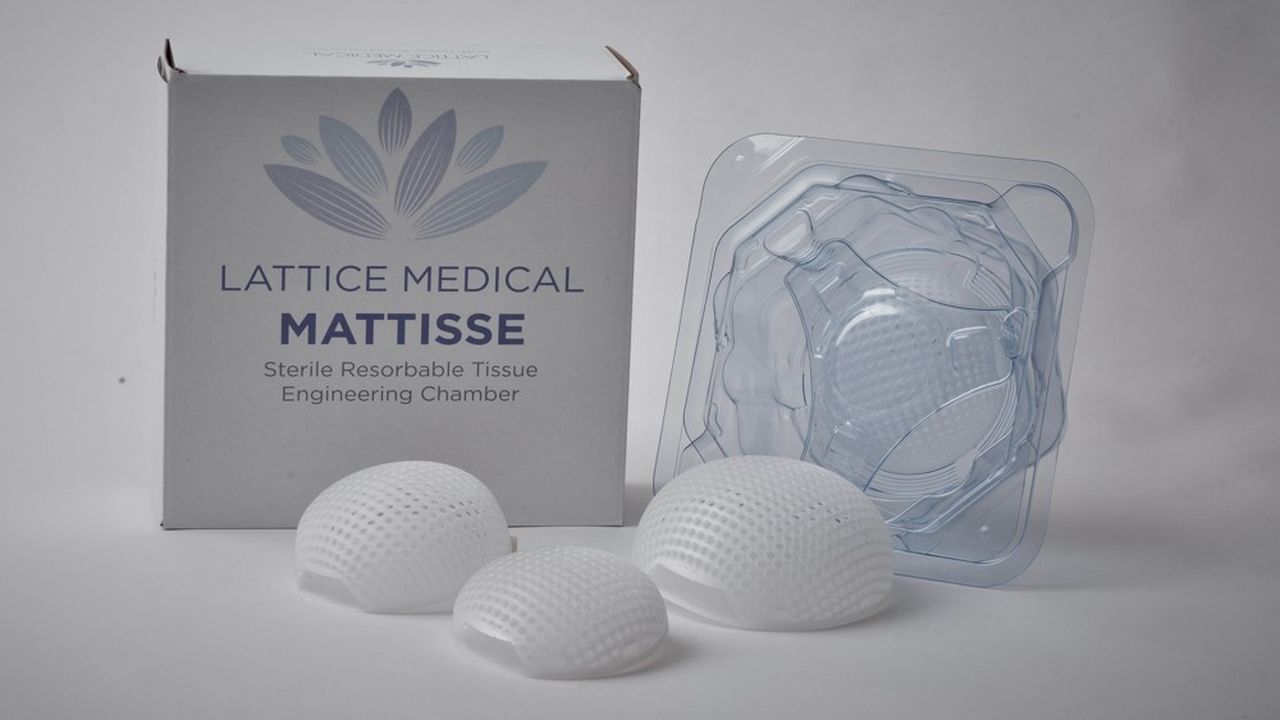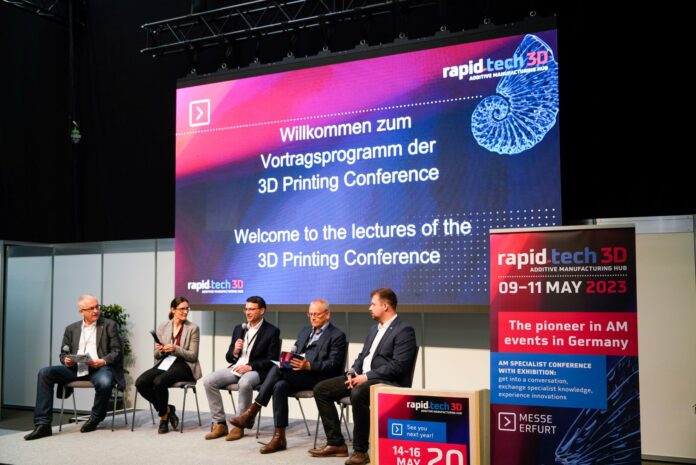For its 19th edition, the Additive Manufacturing Hub returned to Erfurt, Germany for three days that ambitioned to combine practice and theory on everything related to Additive Manufacturing. Acknowledged for its industrial companies, the capital of Thuringia has always been a meeting place and home of important intellectuals and a magnet for visitors from around the world.
In the case of Rapid.Tech 3D especially, what has long been considered an event exclusively dedicated to the German market is starting to evolve as the organizers of the event are exploring partnerships with partners outside of the country.
This has been highlighted on the show by a wide range of speakers who conducted presentations in English or the signing of a multi-year cooperation with AMTech Expo, India’s largest business networking platform for AM.
“The main concern for both of us is to further advance the use of AM technologies on an industrial scale. By supporting each other as partner events, we are helping to promote the transfer of expertise and technology between the AM communities of India and Germany,” underlines Michael Kynast, Managing Director of Rapid.Tech 3D organiser Messe Erfurt.
This need for internationalization was also reflected in the quality of exhibitors. Beyond the regular exhibitors such as AM Solutions, toolcraft, pro-beam, the event also hosted a couple of international companies that ambition to cement their positioning in the DACH region. These companies include for instance the likes of INTAMSYS, Eplus3D, Massivit, Chromatic. That being said, most manufacturers were represented by their local resellers.
On a more technical note, a big part of our interest lied in the keynote presentations of the event. As announced a few weeks ago, rapid.tech 3D expected over 70 experts from Audi to ZEISS who must share knowledge across 9 different forums.
Takeaways of keynote speeches: the use of AM in the automotive and the chemical industries
With over 70 AM experts and presentations, deciding what stood out from the crowd comes down to a subjective experience. In this specific case, we would like to highlight the use of AM in the automotive and in the chemical industries.
Confessing that he knew precious little about AM, keynote speaker Frank Rinderknecht of Rinspeed opened the second day of Rapid.Tech 3D 2023 (May 10). “We are all pioneers,” he emphasized. Just as he and his team see themselves as madmen who, in the best sense of the word, dislocate and thus move seemingly entrenched facts, AM, he said, was also born of thinking ahead, of having the courage to be different.
Rinspeed has been developing visionary mobility concepts for over 40 years. The latest innovation is the modular CitySnap vehicle concept, which can be used as a delivery vehicle, for example, to bring mobile packing stations, or can be used with another module to transport passengers – electrically driven and, in the future, driving automatically and all also implemented with the means of 3D printing. The new sustainable mobility solutions needed for many reasons cannot be realized without groundbreaking innovations. For Frank Rinderknecht, this includes constant further development in the AM sector.
On another note, Jurjen Meeuwissen, senior researcher at Shell reported on the state of research in 3D printing of catalysts for gas-to-liquid processes. At an internal presentation on the topic in 2018, the majority was still of the opinion that 3D printed catalysts belonged rather in the realm of fiction, he said. In the meantime, the future potential of the development is revealing itself, as the design freedom of 3D printing makes it possible to break down boundaries in traditional catalyst production.
Interestingly, the use of AM in the chemical industry has often served the production of laboratory equipment on demand – especially the production of a range of open-source, functional laboratory hardware. In addition to the standard laboratory hardware and tools, AM is also utilized for highly specialised analytical instruments. A key example of that is the fabrication of a LED-based capillary detector housing with an integrated slit, using an FDM 3D printer. The 3D printed photodetector compared favourably with the commercially available version.
Applications of AM in modern-day chemistry is vast. It is not only limited to digital manufacturing of laboratory hardware, analytical instruments, teaching aids, and reactor development, but it is a novel tool for catalyst design and development, robotics, and automation for digital synthesis in chemistry. Professionals in this field have yet to address all the opportunities of the technology for these applications.
The Rapid.Tech 3D trade visitors also exchanged information about the latest AM developments and applications in the Medicine, Design and Software & Processes forums.
Corona and Ukraine conflict still at the heart of discussions
Not surprisingly, the effects of Corona and the Ukraine conflict on the development of the AM market were the subject of a panel discussion. The transition towards flexible working, the acceleration of digital processes as well as the sensitization for value creation and procurement processes within Europe were assessed by panelists as positive effects of the pandemic. However, not everything can be mapped digitally. In medical technology, for example, direct contact with the patient is needed. AM players are also hoping for business in the necessary modernization of the German armed forces, not least as a result of the Ukraine conflict, for spare parts production.
Winners of the 3D Pioneers Challenge 2023
 Future-oriented developments for many areas of life are created by participants in the international innovation and design competition 3D Pioneers Challenge. The contest has held its finals in Erfurt for eight years. The top prize for 2023 went to the Mattisse bioprosthesis from the French startup Lattice Medical. The implant enables breast reconstruction after cancer surgery without silicone. The prosthesis is perfectly adapted to the body using 3D printing and is completely absorbed by it. The material used “transforms” into the body’s own tissue.
Future-oriented developments for many areas of life are created by participants in the international innovation and design competition 3D Pioneers Challenge. The contest has held its finals in Erfurt for eight years. The top prize for 2023 went to the Mattisse bioprosthesis from the French startup Lattice Medical. The implant enables breast reconstruction after cancer surgery without silicone. The prosthesis is perfectly adapted to the body using 3D printing and is completely absorbed by it. The material used “transforms” into the body’s own tissue.
In addition to the grand prize, honors were awarded in a total of ten categories.
Remember, you can post job opportunities in the AM Industry on 3D ADEPT Media free of charge or look for a job via our job board. Make sure to follow us on our social networks and subscribe to our weekly newsletter : Facebook, Twitter, LinkedIn & Instagram ! If you want to be featured in the next issue of our digital magazine or if you hear a story that needs to be heard, make sure to send it to contact@3dadept.com






